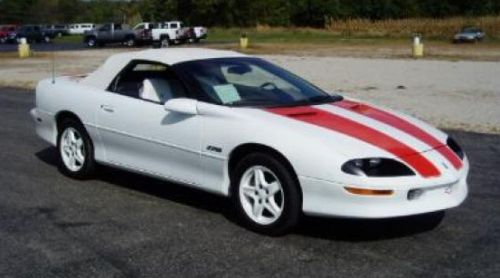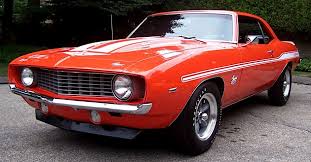https://www.google.ca/search?q=2010+camaro&safe=strict&hl=en&biw=1024&bih=667&site=webhp&source=lnms&tbm=isch&sa=X&ved=0ahUKEwih1t23nuPJAhVo44MKHbMiAnAQ_AUIBigB
https://en.wikipedia.org/wiki/Chevrolet_Camaro
Thursday, December 17, 2015
Fifth and Sixth gen camaro
Fifth Generation Camaro (2010-2015)-The Camaro received a complete redesign, and new platform for the 2010 model year/fifth generation. Based on the2006 camaro concept and 2007 camaro convertible concept, production of the fifth generation camaro was approved on August 10, 2006. The Oshawa plant in the city of Oshawa, Ontario, Canada began producing the new Camaro which went on sale in spring of 2009 as a 2010 model year vehicle.


Sixth generation camaro (2015 and up)- On May 16, 2015, Chevrolet introduced the sixth generation Camaro at Belle Isle park in Detroit, Michigan. The launch, complete with previous generation Camaros on display, coincided with the vehicle's upcoming 50th birthday.
The sixth generation Camaro sales will begin in late 2015 and will be offered in LT and SS models built on the GM Alpha platform at Lansing Grand River Assembly in Michigan. The A platform is currently used by the Cadillac ATS. The 2016 Camaro will weigh 200 lb (91 kg) less than its predecessor. Over 70% of the sixth generation's architectural components are unique to the car and are not shared with any other current GM product.
The sixth generation Camaro sales will begin in late 2015 and will be offered in LT and SS models built on the GM Alpha platform at Lansing Grand River Assembly in Michigan. The A platform is currently used by the Cadillac ATS. The 2016 Camaro will weigh 200 lb (91 kg) less than its predecessor. Over 70% of the sixth generation's architectural components are unique to the car and are not shared with any other current GM product.

Third and Fourth Gen Camaro
Third generation Camaro (1982-1992)- The third-generation Camaro was produced from 1981 (for the 1982 model year) to 1992. These were the first Camaros to offer modern fuel injection, Turbo Hydromatic 700R4 four-speed automatic transmission, five speed manual transmissions, 15 or 16 inch wheels, a standard OHV 4 cylinder engine, and hatchback bodies. The cars were nearly 500 pounds (227 kg) lighter than the second generation model.

Fourth generation Camaro (1993-2002)-The fourth-generation Camaro debuted in 1993 on an updated F-body platform. It retained the same characteristics since its introduction in 1967: a coupé body style with 2+2 seating (with an optional T-top roof) or convertible (introduced in 1994), rear-wheel drive, push rod 6-cylinder and V8 engines. The standard power plant from 1993-1995 was a 3.4 litre V6. A 3.8 litre V6 was introduced in 1995.



First and Second Generation Camaro
First generation camaro (1967-1969)-The 1967 model had the same body lines as the 1968 model. There were a few design changes in 1968. The vent windows were eliminated. To replace that airflow, below-dash air vents (Astro-Ventilation) were added to the interior. Side marker lights were added to the front fenders and the rear quarters, a mandate for all 1968 vehicles by the NTSA. In 1969 hood, roof, and deck lid did not change, the body lines were significantly modified at the nose, fenders, quarters, and tail pan, giving the Camaro a more streamlined look. A moulded body streak extended from the rear of each wheel opening, adding to the effect.

Second generation camaro (1970-1981)- In 1970 The Chevy Camaro was completely redesigned from the ground up. Introduced in February 1970, the second-generation Camaro was produced through the 1981 model year, with cosmetic changes made in 1974 and 1978 model years. The car was heavily restyled and became somewhat larger and wider with the new styling. Still based on the F-body, the new Camaro was similar to its predecessor, with a uni body structure, front subframe, an A-arm front suspension, and leaf springs to control the solid rear axle. Road & Track picked the 1971 SS350 as one of the 10 best cars in the world in August 1971. RS (shown to the right), SS package was dropped in 1972 and reintroduced in 1996. The 1980 and 1981 Z28 models included an air induction hood scoop with an intake


Wednesday, December 16, 2015
Introduction
My research post is about the history and generations of the Chevy Camaros. In this blog I will discuss and look at some years and model of the Chevy camaro throughout its lifespans.
Subscribe to:
Posts (Atom)